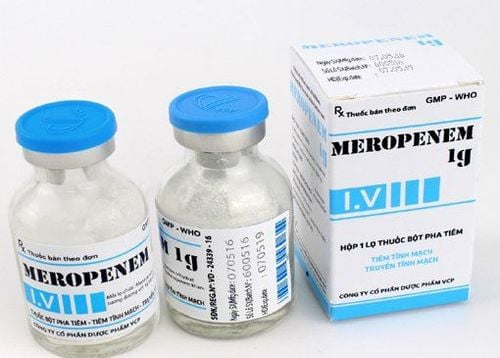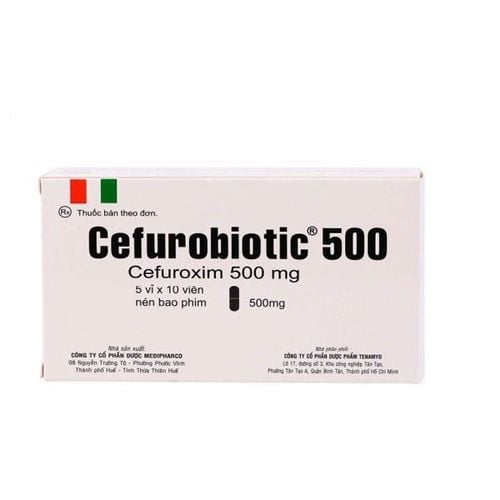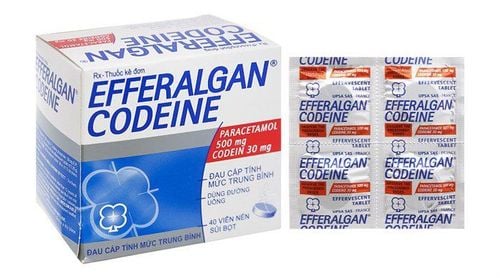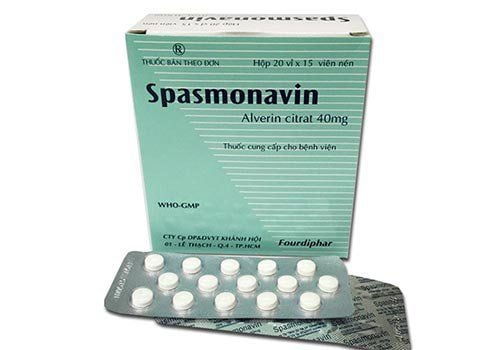This is an automatically translated article.
Crysticillin is an antibiotic used in the case of infections caused by bacteria sensitive to Penicillin antibiotics. To understand more about the drug Crysticillin, please refer to the information through the article below.
1. What is Crysticillin?
Crysticillin has the main ingredient Penicillin, the brand name Crysticillin is used for some antibiotics in the Penicillin group. The drug is prepared in the form of oral administration, injection route such as intravenous route, intramuscular route.
Penicillin is an antibiotic that kills or stops the growth of bacteria by inhibiting bacterial cell wall synthesis.
Crysticillin is used to treat infections caused by bacteria, penicillin is used to treat infections caused by susceptible bacteria in many different parts of the body. They are sometimes prescribed together with other antibacterial drugs (antibiotics). There are several different types of penicillin and each is used to treat different types of infections.
However, no penicillin antibiotic is effective for treating colds, flu, or other viral infections.
2. What is the use of Crysticillin?
Crysticillin by killing bacteria is indicated in the treatment of the following medical conditions:
Respiratory tract infections such as pharyngitis, mild to moderate tonsillitis if used and severe parenteral administration . Chlamydia infection in pregnant women. Helicobacter pylori-associated gastritis or peptic ulcer disease Lyme disease; Typhoid fever. Streptococcal infection (no bacteremia); Skin and soft tissue infections. erysipelas, gingivitis. Oral Crysticillin is indicated prophylactically: To prevent recurrence after rheumatic fever. Prophylaxis with this drug-based oral Crysticillin needs to be shown to be effective in preventing recurrence of these conditions. Crysticillin oral tablet is used as an oral regimen for the prophylaxis of bacterial endocarditis in patients with congenital heart disease, rheumatic fever, or other acquired valvular heart disease.
3. Usage and dosage of Crysticillin
3.1 How to use Crysticillin is administered intramuscularly, orally or intravenously. The route of administration depends on the dosage form and severity of the infection.
Mild to moderate infections taken orally. Best taken with a full glass of water on an empty stomach (1 hour before or 2 hours after a meal) unless otherwise directed by your doctor. Do not take this medicine acidic juices (for example, orange or grapefruit juice) or other acidic drinks within 1 hour of taking it, as this may cause the medicine to not work as well. Crysticillin can be administered intramuscularly or intravenously as a 3-5 minute intravenous injection or a 20 to 30 minute intravenous infusion. Crysticillin must not be mixed with aminoglycoside antibiotics in syringes or infusion bottles as this may inactivate the aminoglycosides. 3.2 Dosage The usual dose of Crysticillin for infections depends on the type of Penicillin. There are many different types of penicillin and the dosages vary.
Some dosage recommendations that can be referred to are as follows:
For amoxicillin:
For oral dosage forms (capsule, oral suspension, tablets and chewable tablets):
Adults, adolescents: and children weighing more than 40kg take a dose equivalent to 250 to 500 milligrams (mg) every eight hours or 500 to 875 mg every twelve hours, depending on the severity of the infection. Newborns and infants up to 3 months of age: Dosage is based on body weight and must be determined by a doctor. The usual dose is 15 mg per kilogram of body weight or less every 12 hours. Infants 3 months of age and older the usual dose is 6.7 to 13.3 mg per kilogram of body weight every eight hours or 12.5 to 22.5 mg per kilogram of body weight every twelve hours. For ampicillin antibiotics:
For oral dosage forms (capsule and oral suspension):
Adults, adolescents, and children weighing more than 20 kilograms (kg) orally 250 to 500 milligrams (mg) every six hours . Infants and children weighing up to 20kg: Dosage is based on body weight and must be determined by your doctor. The usual dose is 12.5 to 25mg per kilogram of body weight every six hours; or 16.7 to 33.3 mg per kilogram of body weight every eight hours. For injectable dosage form:
Adults, adolescents and children weighing more than 20 kg: Doses 250 to 500 mg, given intravenously or intramuscularly every three to six hours. Infants and children weighing up to 20 kg: Dosage is based on body weight and must be determined by your doctor. The usual dose is 12.5 mg per kilogram of body weight, given intravenously or intramuscularly every six hours. For carbenicillin:
For oral dosage form (tablets):
Adults and adolescents: Take 500 milligrams (mg) to 1 gram every six hours. Children: Dosage must be determined by a doctor. For injectable dosage forms:
Adults and adolescents: Dosage should be based on body weight and must be determined by a physician. The usual dose is 50 to 83.3 mg per kilogram (kg) of body weight, given by injection into a vein or muscle every four hours. Infants and older children: Dosage should be based on body weight and should be determined by a physician. The usual dose is 16.7 to 75 mg per kilogram of body weight, given by injection into a vein or muscle every four to six hours. For penicillin G:
For oral dosage forms (oral solution, oral suspension, and tablets):
Adults and adolescents: Take 200,000 to 500,000 Units (125 to 312 milligrams) every four to six hours . Infants and children under 12 years of age: Dosage is based on body weight and must be determined by a physician. The usual dose is 4167 to 30,000 Units per kilogram (kg) of body weight every four to eight hours. For the injectable dosage form (potassium and sodium salts):
Adults and adolescents: Dosage 1,000,000 to 5,000,000 units, given intravenously or intramuscularly every four to six hours. Infants and older children: Dosage is based on body weight and must be determined by a physician. The usual dose is 8333 to 25,000 Units per kilogram of body weight.
4. Undesirable effects of Crysticillin
Side effects of Crysticillin depend on different types of Penicillin. Some side effects of the drug may include:
Less common: Rapid or irregular breathing; fever; athritis; lightheadedness or fainting (sudden); puffiness or swelling around the face; red, scaly skin; shortness of breath; skin rash, rash, itching Rare: Severe stomach or abdominal cramps; stomachache; convulsions; decreased urine output; diarrhea (watery and severe), which may also be bloody; mental decline; nausea and vomiting; pain at the injection site; sore throat and fever; unusual bleeding or bruising; yellow eyes or yellow skin; More common: Mild diarrhea ; headache; mouth or tongue pain; itching and vaginal discharge; white patches in the mouth or on the tongue. When taking the drug, if you see any side effects, you should notify your doctor, in case of serious side effects, you need to go to a medical facility immediately for timely treatment.
5. Things to keep in mind when using Crysticillin
Contraindications:
Crysticillin should not be used in patients known to be allergic to penicillin and should be used with caution in patients with a history of allergy to cephalosporin antibiotics. Cases of cross-sensitization have been reported. Also should not be administered to infants, in the neonatal period, born to hypersensitive mothers. This medicine is not recommended for chronic, severe infections such as acute and subacute infective endocarditis, meningitis, or syphilis. Before taking this medicine, tell your doctor about other medical problems that may affect the use of this class of drugs, including:
General allergies (such as asthma, eczema, hay fever, hives); Bleeding problems or history: Patients with a history of bleeding problems may be more prone to bleeding when taking antibiotics such as carbenicillin, piperacillin or ticarcillin Congestive heart failure or high blood pressure : Dosage Large amounts of carbenicillin or ticarcillin can make these conditions worse, because these medicines contain large amounts of salt. Cystic fibrosis: Patients with cystic fibrosis may be more likely to develop fever and skin rash when taking piperacillin. Kidney disease: Patients with kidney disease may have an increased risk of side effects. Mononucleosis: Patients with mononucleosis may be at increased risk of skin rash when taking ampicillin, bacampicillin, or pivampicillin. Stomach or intestinal disease, history (especially colitis, including antibiotic-associated colitis): Patients with a history of stomach or intestinal disease may be more susceptible to colitis when taking this medicine. penicillin. To reduce the development of drug-resistant bacteria and maintain the effectiveness of Crysticillin, it is recommended that the drug be used to treat or prevent infections that are clearly proven or suspected to be caused by susceptible bacteria. When information on cultures and susceptibility is available, their use should be considered in the selection or adjustment of antimicrobial therapy.
As with other antibiotics, the use of Crysticillin may also increase the growth of susceptible microorganisms. If you experience persistent or severe diarrhea, seek medical attention immediately, for examination and treatment if necessary.
For pregnant and lactating women: These are special subjects, need to be careful when choosing drugs.
6. Crysticillin drug interactions
Several drugs may interact with Crysticillin, including:
Aminoglycosides : Mixing a drug with an aminoglycoside can significantly inactivate the aminoglycoside. Vecuronium: In a controlled clinical study co-administration of these two drugs was reported to prolong the effects of vecuronium. Probenecid: The oral combination of probenecid before intramuscular Crysticillin increased peak serum piperacillin concentrations by approximately 30%. Anticoagulants: Coagulation parameters should be checked more frequently and monitored frequently when high-dose heparin, oral anticoagulants, or other drugs may affect coagulation. blood or platelet function. Methotrexate: Crysticillin may decrease the excretion of methotrexate. Therefore, regular monitoring of methotrexate serum concentrations in patients is recommended to avoid drug toxicity. Oral contraceptives that contain estrogen may not work properly if you take them while you are taking ampicillin, amoxicillin, or penicillin V. Unplanned pregnancy may occur. You should use another or additional means of birth control while taking any of these penicillins. Store the medicine in the sealed container at room temperature, away from heat, moisture, and direct light. Do not allow the medicine to freeze. Keep out of reach of CHILDREN. Do not keep medicine that has expired or is no longer needed.
Hopefully with the information about the drug Crysticillin you know what the drug works and how to use it. Use antibiotics exactly as prescribed by your doctor and only when you have a bacterial infection to avoid drug resistance.













